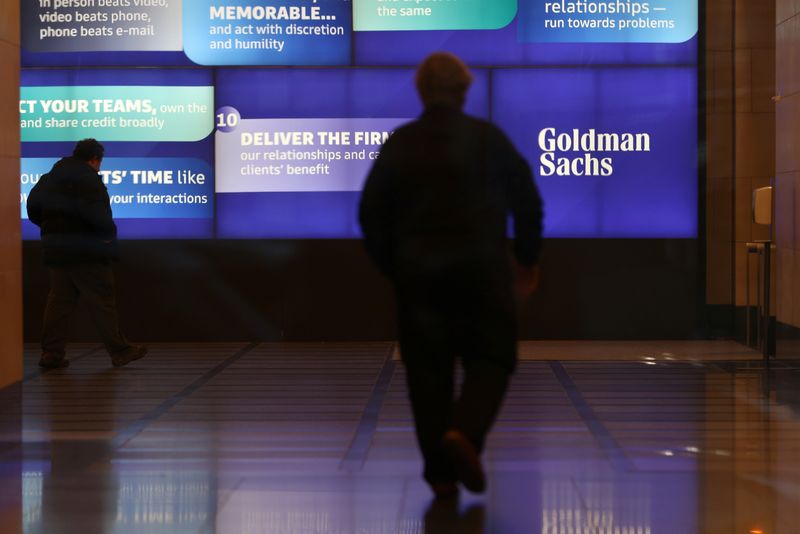© Reuters
Goldman Sachs is facing increasing internal pressure to either exit or significantly modify its consumer-credit businesses, particularly its credit card deals with Apple (NASDAQ:) and General Motors (NYSE:), due to mounting challenges and disagreements within the company. The bank’s unfamiliarity with consumer lending and high credit-risk burden are some of the key factors driving this pressure, according to Brian Riley of Javelin Strategy & Research.
The bank’s disenchantment with its consumer credit strategy has become evident through recent actions such as the sale of Greensky (NASDAQ:) at a loss after acquiring it for $2.2 billion. Goldman Sachs is also considering withdrawing support for Apple’s 2019-launched credit card and the GM co-branded card program, recently taken over from Capital One Financial (NYSE:).
Despite discussions with American Express (NYSE:), no firm decisions have been made yet regarding these drastic changes. However, the forthcoming earnings report is anticipated to shed more light on the bank’s performance in this sector, with stakeholders expecting a decline in profits.
The aggressive expansion into the consumer lending sector under CEO David Solomon has faced internal criticism, particularly due to significant losses incurred. Regulatory concerns have also emerged, leading to scrutiny by the Consumer Financial Protection Bureau over Goldman Sachs’ credit card account management practices.
Riley argues that Goldman Sachs’ oversimplification of the complexities involved in building a robust loan book makes exiting the credit card business more challenging and potentially costlier than other consumer-lending ventures. The liquidity-focused market, the need for large cash reserves to meet credit line commitments, the long-term nature of credit card paybacks, and an unsteady market environment are all factors expected to complicate any potential sale. A likely buyer would need to be an established credit card lender.
This article was generated with the support of AI and reviewed by an editor. For more information see our T&C.
Read the full article here




